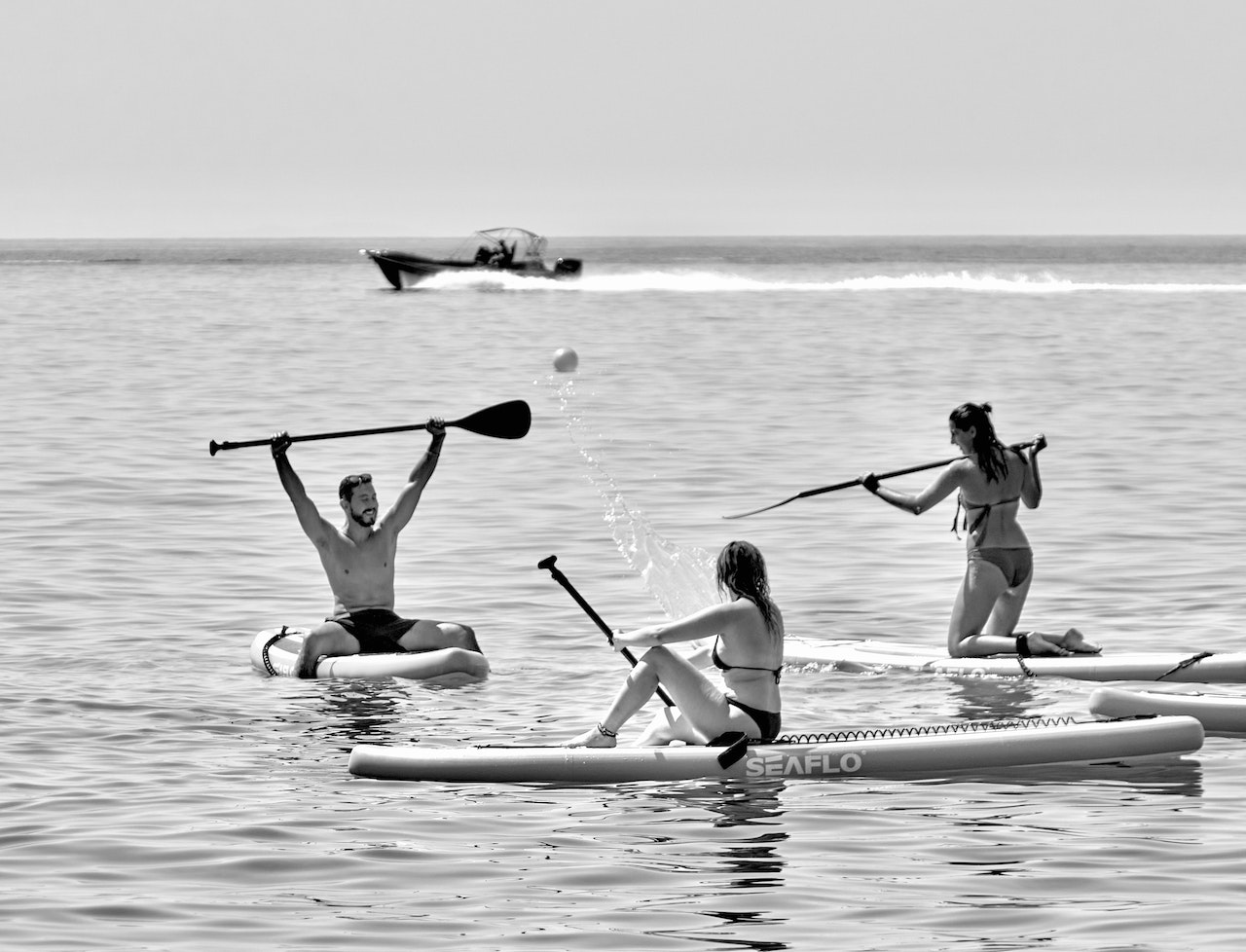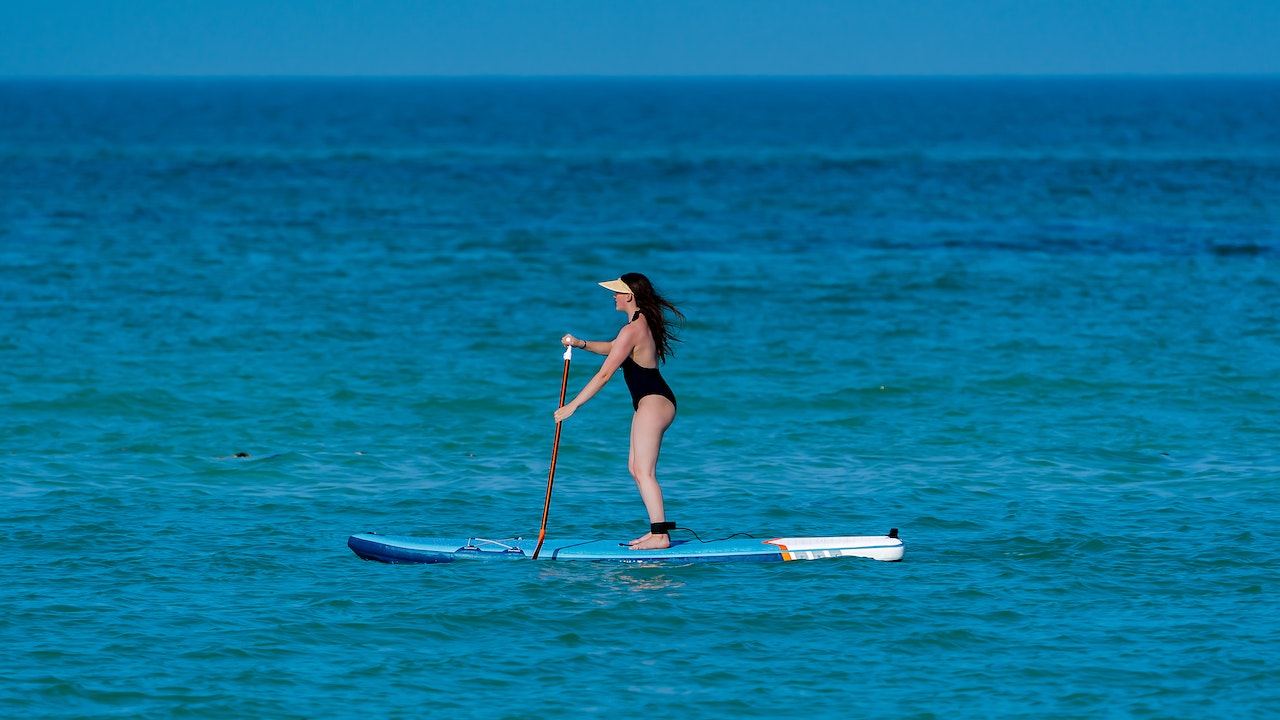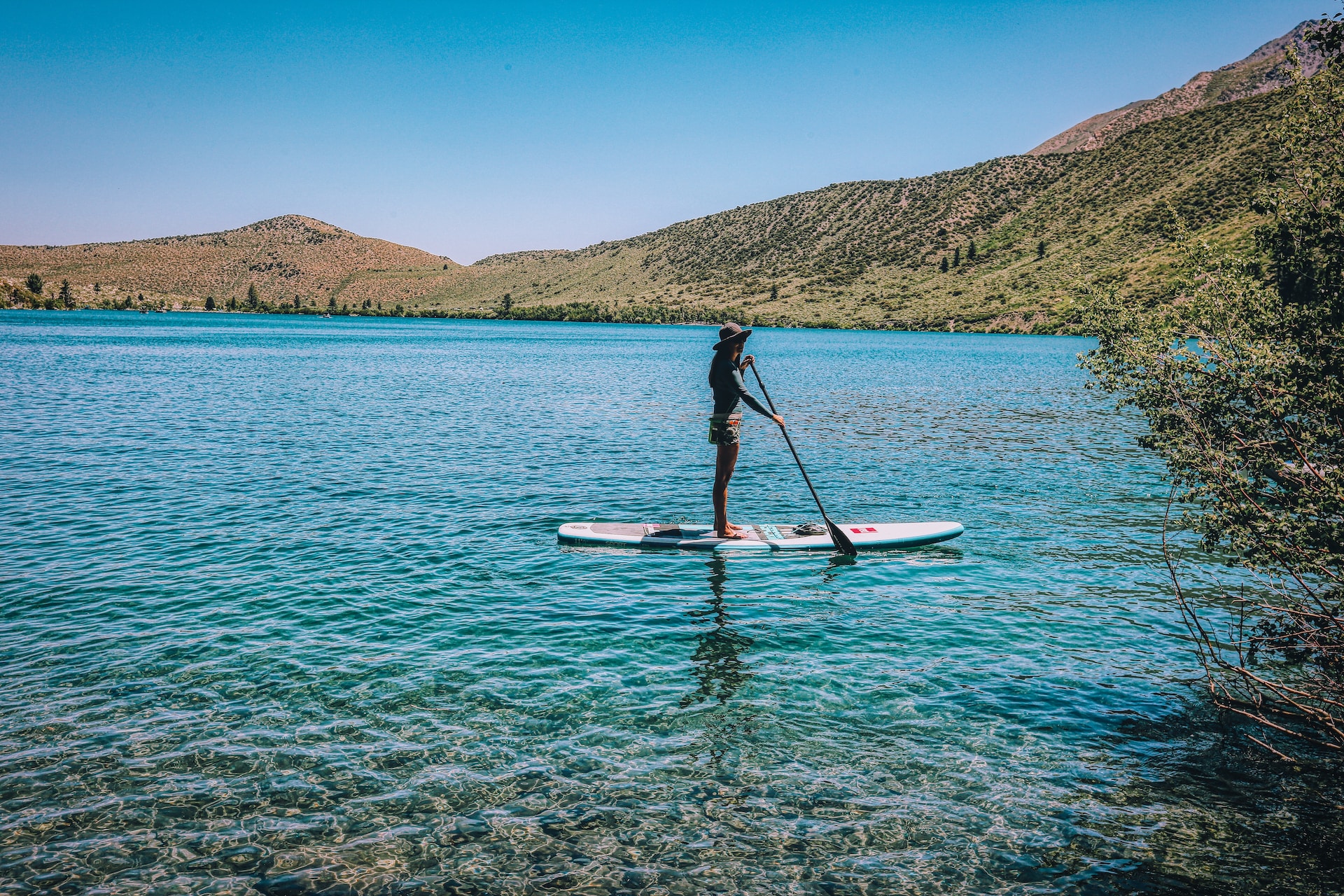Stand-up paddleboarding (SUP) has emerged as one of the fastest-growing watersports, drawing enthusiasts to both inflatable and solid paddleboards. SUPing not only promises an enjoyable time on the water but also offers an effective means of achieving fitness. (1) Regular practice can significantly boost your overall fitness levels, particularly by strengthening your core, which is the primary source of your paddle power.
Regardless of whether you’re an absolute beginner taking your first steps into the world of SUP or a more seasoned paddler, acquiring a repertoire of tips and tricks can significantly enhance your SUP experience. For those seeking to master SUP, the most effective approach is to enroll in a lesson. (2) This invaluable experience equips you with essential techniques, insights on safely regaining your balance on the board, and a deeper understanding of environmental factors such as wind patterns and tidal information. Such knowledge lays a solid foundation for your future paddling adventures, ensuring you’re well-prepared to enjoy your time on the water to the fullest.
Whether you are a novice embarking on your maiden voyage or a seasoned pro with countless hours on the board, prioritizing safety on the water should be paramount. (3) To guarantee a secure and enjoyable experience, conducting several essential safety checks specific to Stand Up Paddleboarding (SUP) is crucial. (4) Hence, always remember the following tips before you embark on your water journey!
Use These 10 Important SUP Safety Tips To Paddle Smartly
While it’s tempting to embark on a standup paddleboarding (SUP) adventure with a relaxed approach, it’s crucial to strike a balance between spontaneity and prudent preparation. (5) To ensure a safe and enjoyable experience, here are 10 essential safety guidelines for standup paddleboarding that should be consistently considered whenever you prepare for a day on the water.
1. Wear Your Leash On at All Times
Your leash serves as a vital connection between you and your board. Secured to your ankle and your SUP board, it’s an indispensable piece of safety equipment that should never be overlooked. Stand-up paddleboards (SUP) are remarkably agile and glide swiftly across the water’s surface. If you unexpectedly tumble off your SUP board, retrieving it without a leash can potentially entail a lengthy and strenuous swim. However, when you keep your leash fastened, your board remains within reach, ensuring you don’t get separated from it. In essence, wearing your leash isn’t just a precautionary measure; it’s a lifeline that maintains your proximity to your board, preventing unnecessary exertion and potential difficulties when you’re out on the water.
2. Consider Weather Conditions
Exercise caution when dealing with weather conditions. It’s prudent to avoid paddling out when windy conditions prevail. The force of the wind can carry you quite a distance from your initial launch point, and attempting to paddle against the wind is arduous and likely to result in exhaustion. Prior to venturing out, always assess the weather conditions. Winds can shift rapidly, catching you off guard and making it challenging to return to your starting point. With experience, you’ll develop a better ability to gauge weather changes accurately. By heeding these precautions, you safeguard yourself against the potential hazards of adverse weather, ensuring a safer and more enjoyable stand-up paddleboarding (SUP) experience.
3. Opt for Calm Waters
When selecting a spot for your stand-up paddleboarding (SUP) excursion, prioritize locations with calm, flat water surfaces. Ideal choices often include rivers and lakes. It’s crucial to familiarize yourself with your chosen location, including any potential hazards it may present. Exercise caution to steer clear of any obstructions, such as boats, moorings, or submerged tree branches, which could pose risks if you were to accidentally fall onto them. By adhering to these guidelines, you enhance your safety while enjoying a serene and risk-reduced SUP experience.
4. Maintain Proximity to the Shore
Stand-up paddleboarding (SUP) can lead you to cover considerable distances at a surprising pace. It’s easy to find yourself far from the safety of the shore without even realizing it. In the event of fatigue, the last thing you want is an extensive journey back to solid ground. To mitigate this risk, consistently monitor your distance from the shoreline. Make it a practice to change your course regularly, ensuring that you remain near the shore. Doing so reduces the effort required to return to safety if needed, enhancing both your safety and peace of mind during your SUP outing.
5. Steer Clear of Swift Currents
Exercise prudence by choosing to paddle in calm, slow-moving waters. Fast-flowing currents can present significant challenges for stand-up paddleboarding (SUP) enthusiasts. These currents not only hinder your ability to paddle effectively but can also swiftly carry you far from your intended path. Attempting to paddle against a swift current can lead to rapid fatigue, making your outing more strenuous than enjoyable. To ensure a safer and more comfortable experience, avoiding fast-flowing water altogether is advisable. Opt for still, tranquil settings that allow you to fully savor your SUP adventure without the added complications of strong currents.
6. Maintain 360° Awareness
When you’re out on the water, it’s imperative to maintain constant awareness of your surroundings. Be vigilant and watchful for the presence of other watercraft, including jet skis, boats, and fellow water enthusiasts. To avoid potential collisions and ensure your safety, it’s essential to keep a safe distance from these other vessels. This 360° awareness is a fundamental aspect of responsible stand-up paddleboarding (SUP) and will help you navigate the waters with greater safety and consideration for others.
7. Prevent Muscular Strain
Despite the apparent simplicity of stand-up paddle (SUP) boarding, it’s imperative to employ the proper paddling technique to stave off repetitive muscle injuries. Enrolling in lessons through an ASI-accredited school is highly recommended as it equips you with a solid grasp of the precise paddling technique. These lessons ensure that you paddle effectively, reducing the risk of recurring muscle strains or injuries. A proper understanding of technique not only enhances your enjoyment of SUP but also safeguards your muscles, promoting a safer and more sustainable paddling experience.
8. Paddle with a Companion
Paddling with a partner offers several significant safety benefits. Firstly, it provides an extra layer of security. In unexpected mishaps, such as capsizing or becoming fatigued, having a buddy nearby ensures that help is readily available. This can be particularly reassuring when paddling in less populated or remote areas. Moreover, sharing the experience with a friend or companion adds an element of enjoyment to your SUP adventure. You can share the sights, navigate together, and provide each other with motivation and encouragement. For more extensive journeys or excursions into unfamiliar territories, it’s also advisable to inform maritime authorities or someone reliable about your plans. This proactive step ensures a record of your intended route and estimated return time. In the rare event of an emergency, this information can be invaluable for search and rescue efforts, further enhancing your safety while pursuing the joys of stand-up paddleboarding.
9. Carry a Waterproof-Encased Phone for Safety
Always have your mobile phone encased in a waterproof pouch when you’re out paddleboarding. Beyond the convenience of capturing memorable moments during your journey, a waterproof-protected phone can serve as a vital tool in case of an emergency. Make sure you keep it readily accessible, perhaps secured in a pocket of your buoyancy aid or worn around your neck, ensuring you can quickly reach it if you find yourself in a distressing situation. Placing it in a dry bag attached to your board is not advisable, as it might become inaccessible in an emergency.
10. Utilize a Buoyancy Aid
When engaging in stand-up paddleboarding (SUP), it’s imperative to wear a buoyancy aid, which is a type of Personal Floatation Device (PFD). These aids serve a dual purpose in ensuring your safety on the water. This offers additional flotation, helping to keep you buoyant in the event of a fall into the water. Moreover, this prevents you from sinking and affords you precious time to regain your composure and return to your board. Falling into the water is a common occurrence, especially when you’re learning to SUP.

Conclusion
As stand-up paddleboarding (SUP) continues to capture the interest of enthusiasts, more individuals are venturing into this exciting watersport. While it offers a thrilling and enjoyable experience, it’s vital to acknowledge the inherent risks and potential dangers that come with it. Therefore, before embarking on any SUP excursion, you must acquaint yourself with and actively practice safety measures. Whether you’re a novice or a seasoned pro, these safety tips are indispensable to ensure that your time on the water remains both enjoyable and secure. SUPing is undeniably a fantastic way to connect with nature and have fun, but doing so responsibly by prioritizing safety enhances the overall experience and safeguards your well-being.





